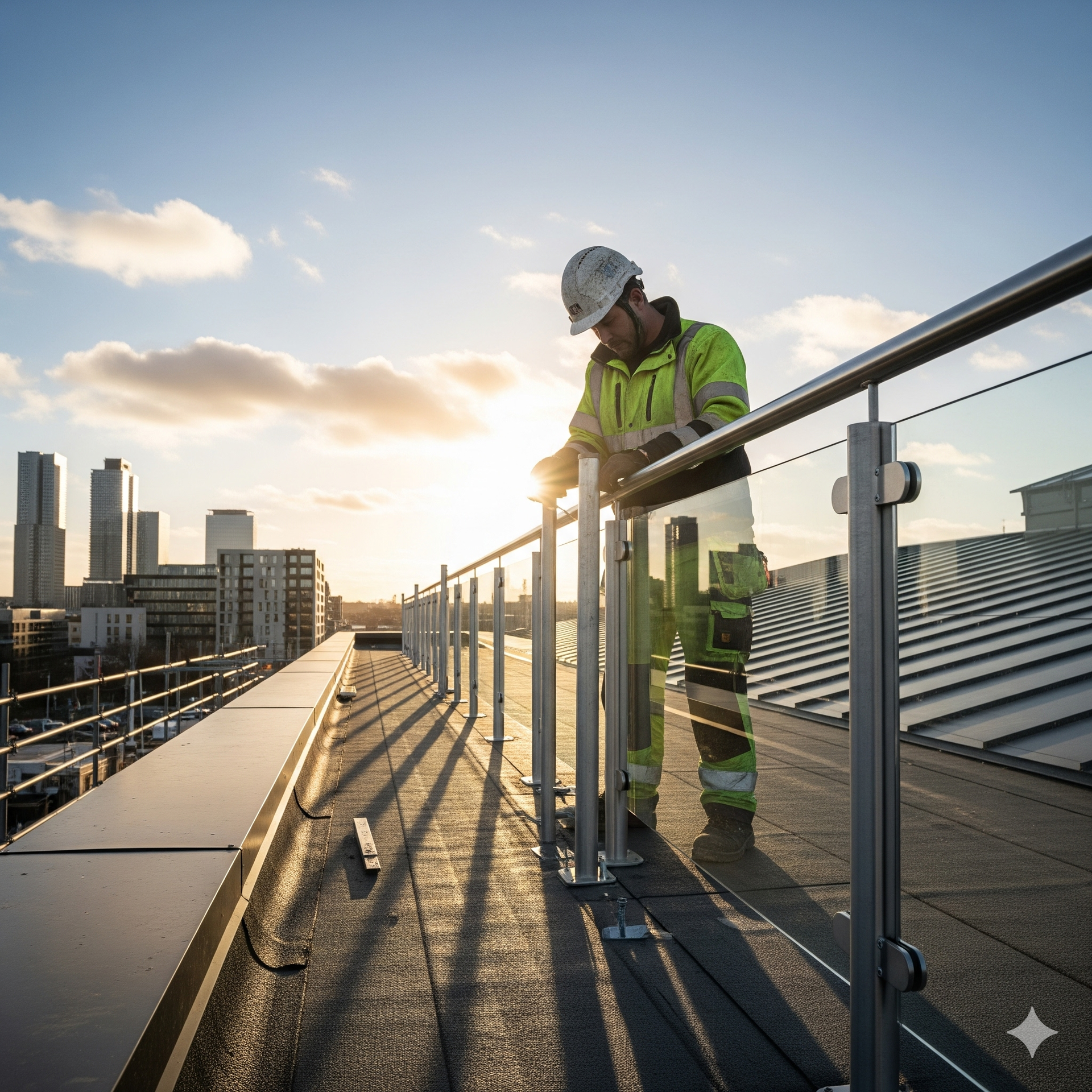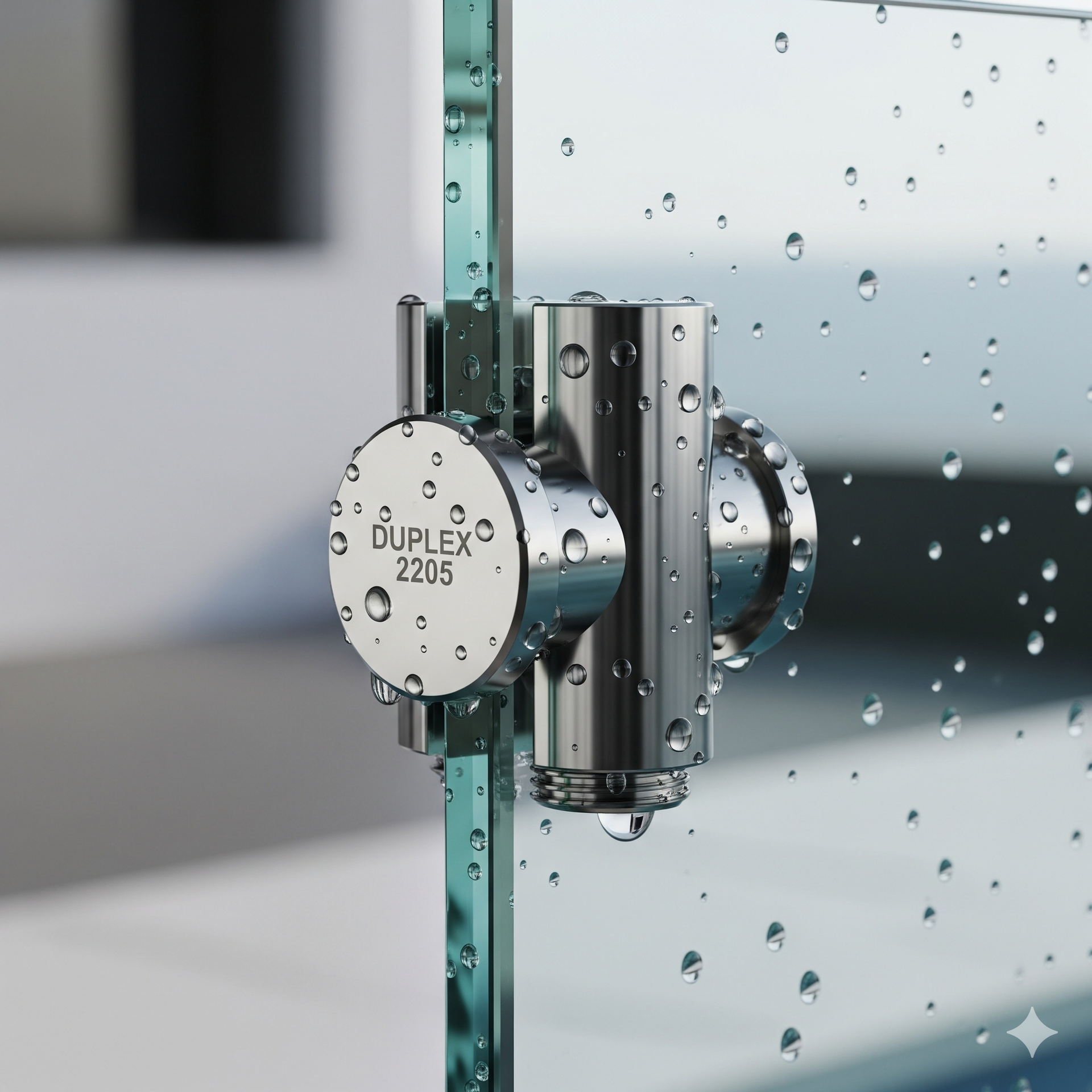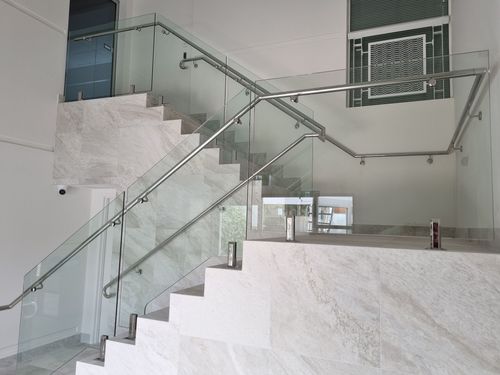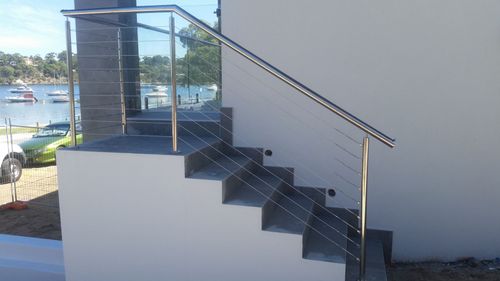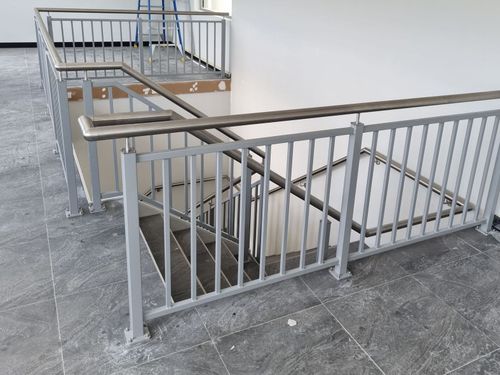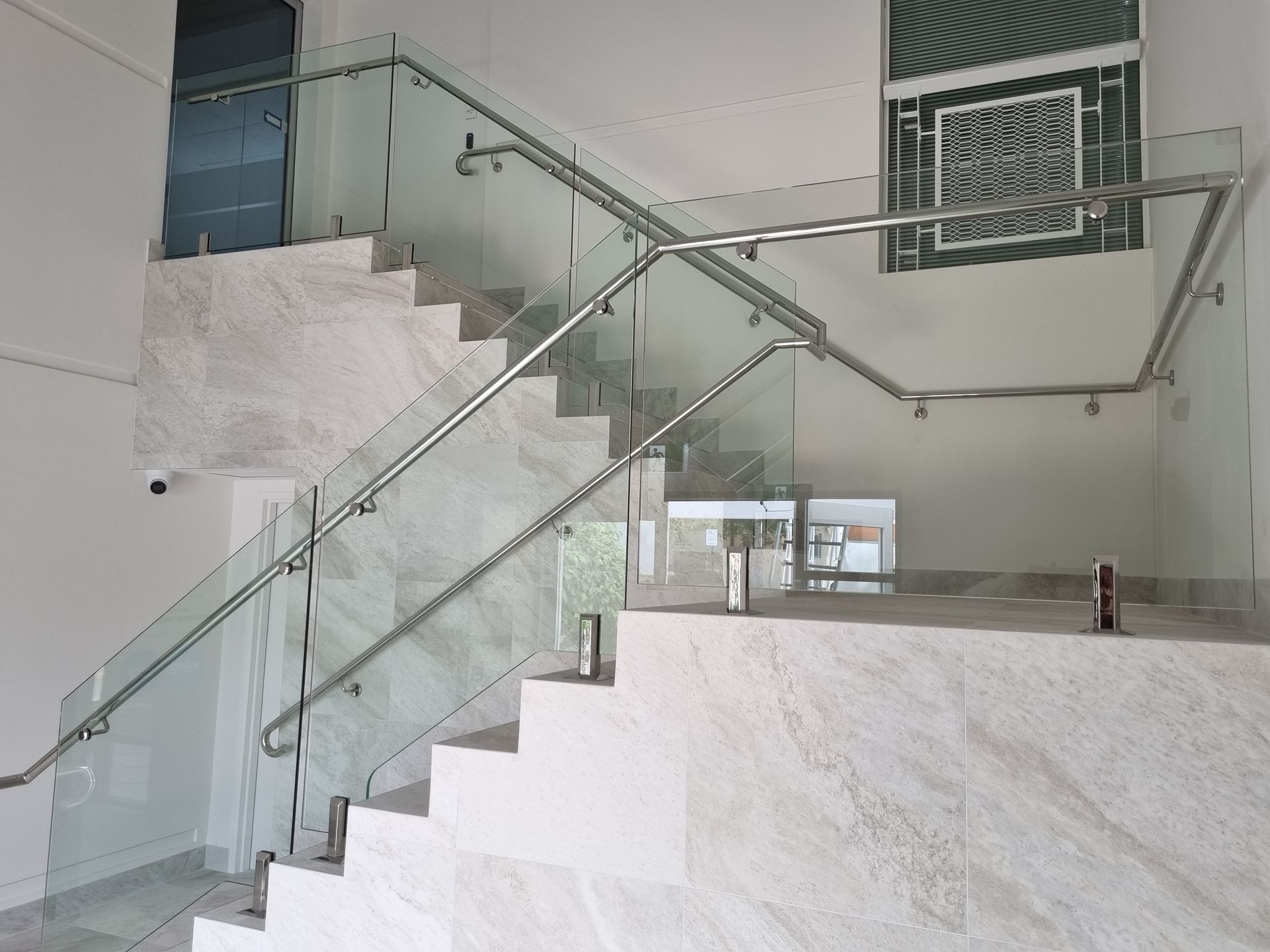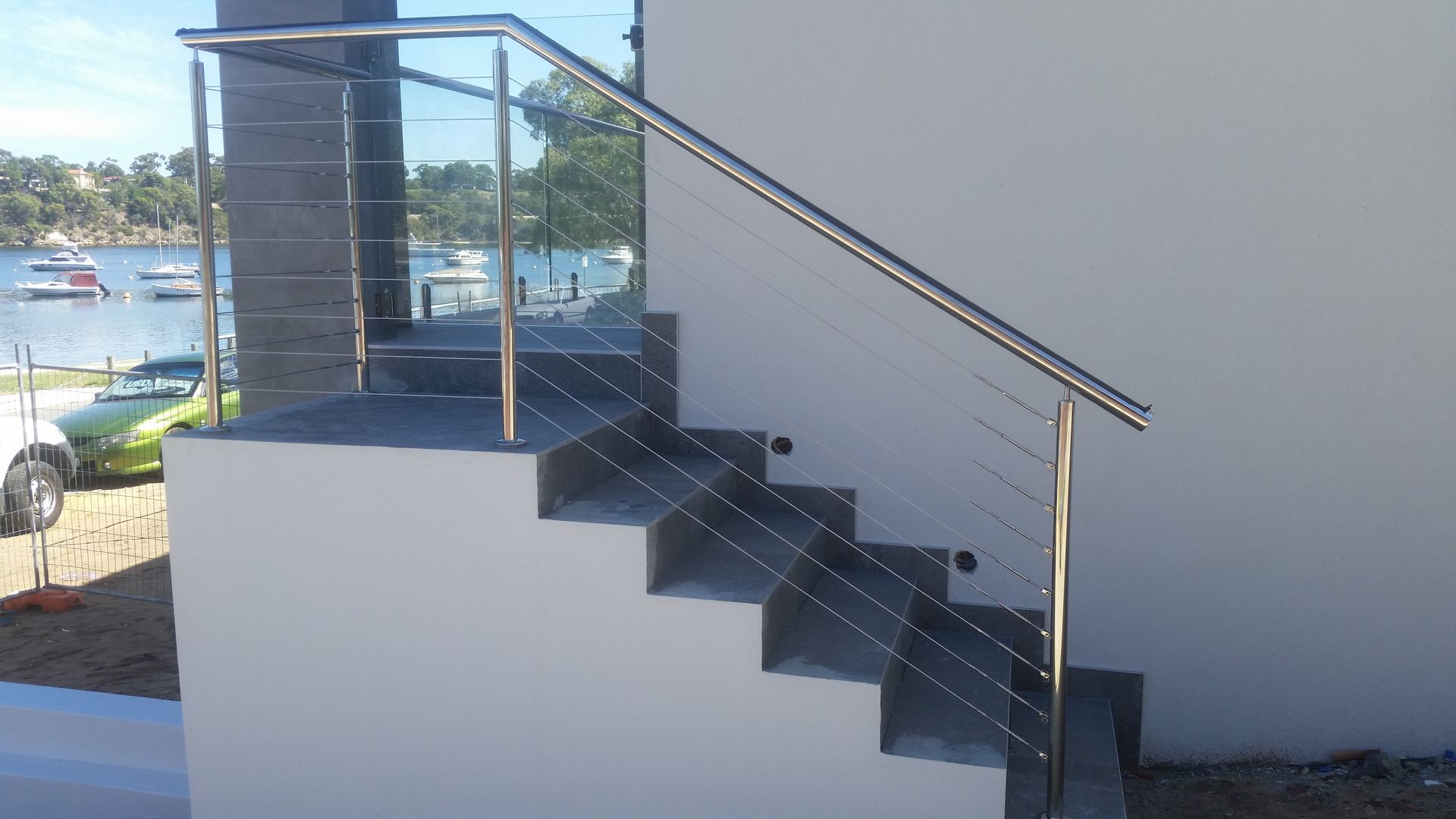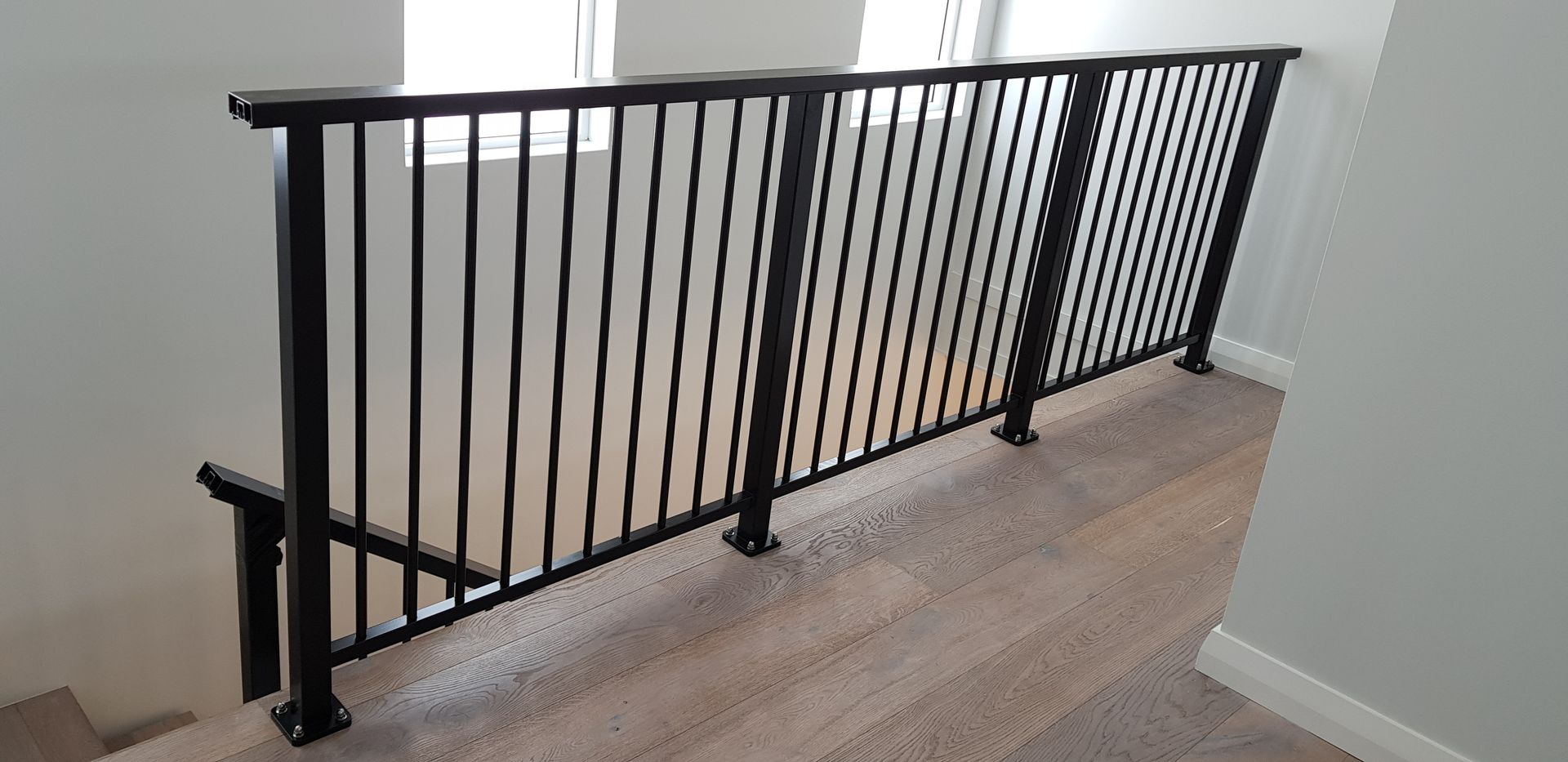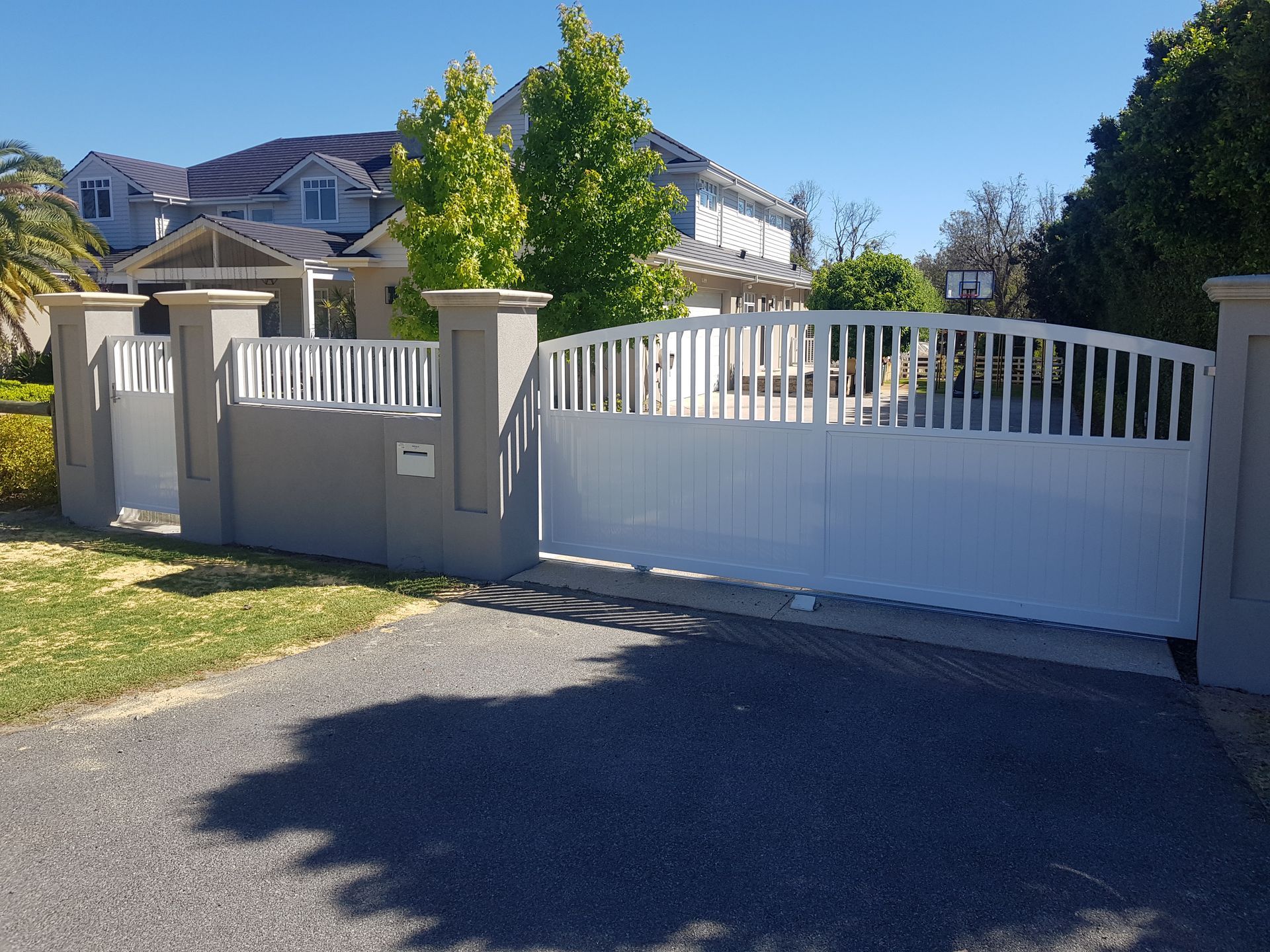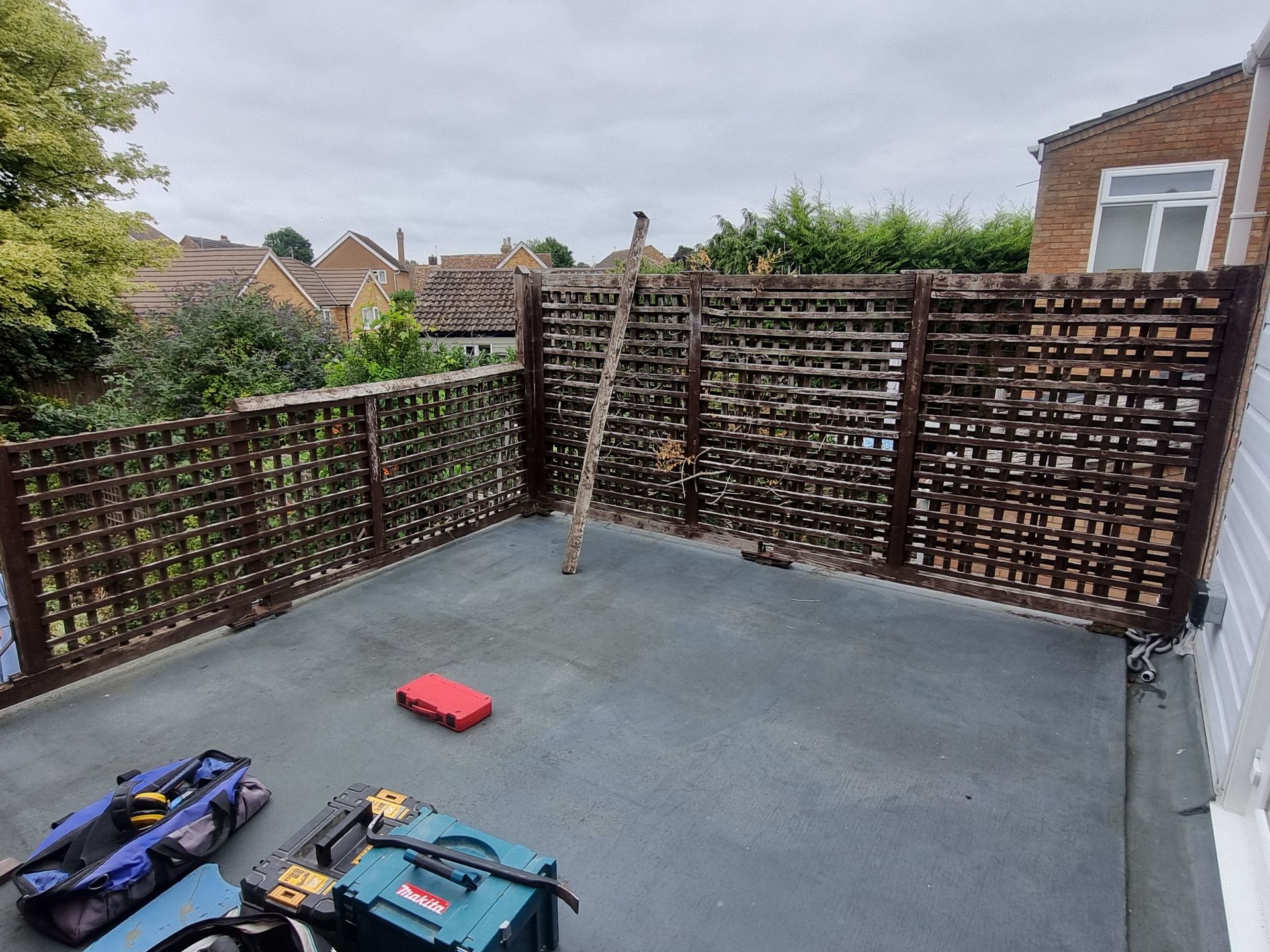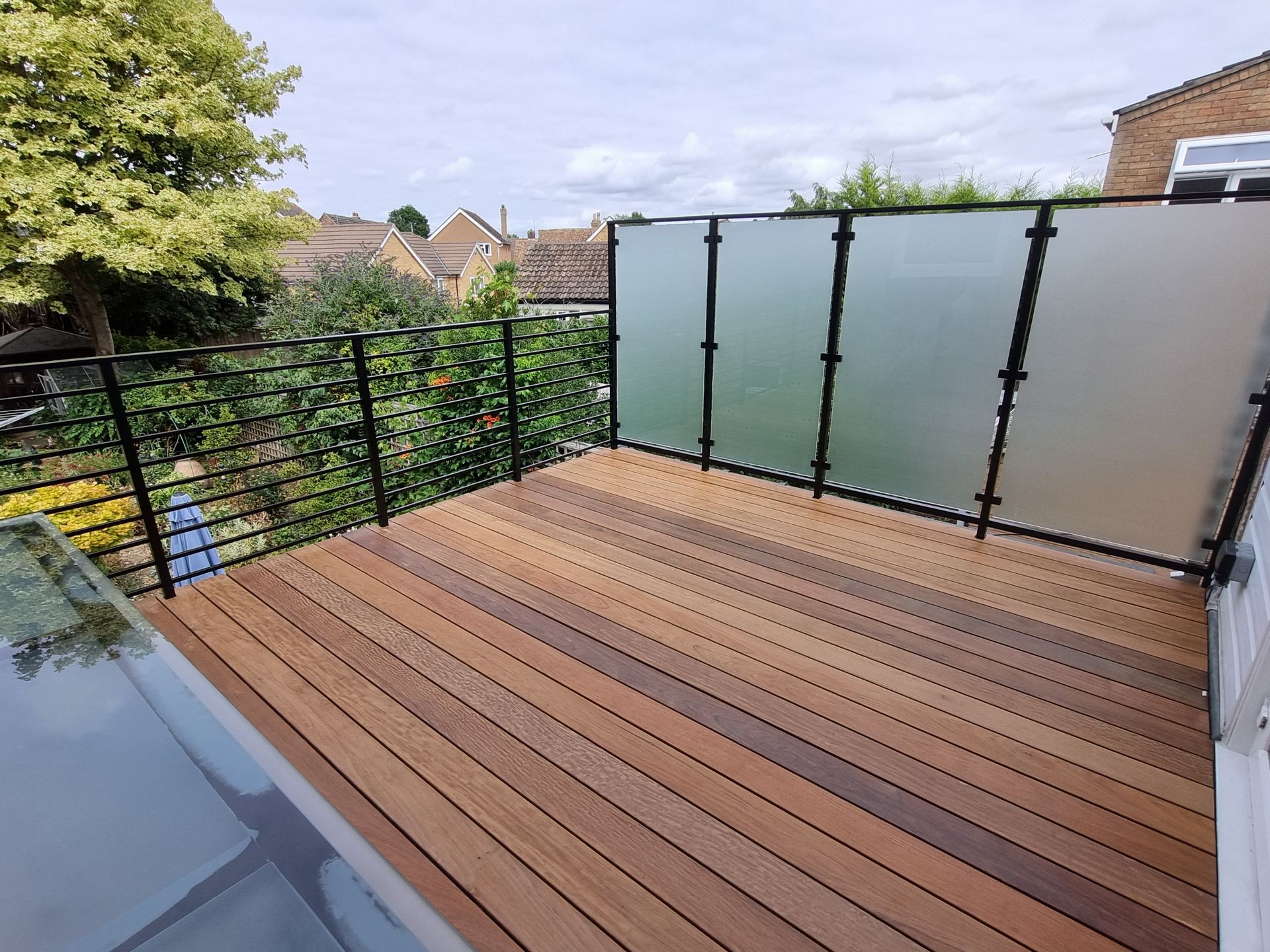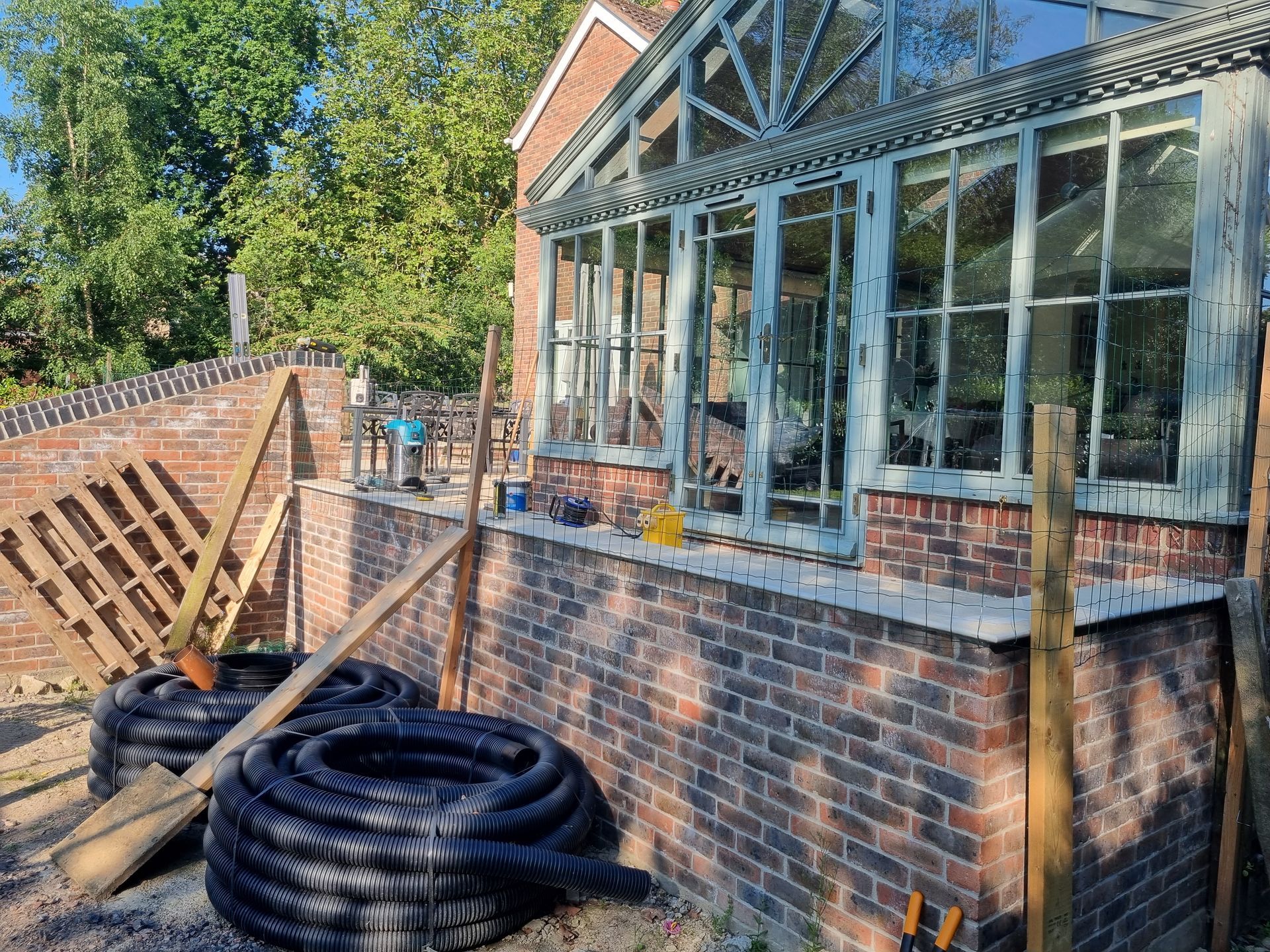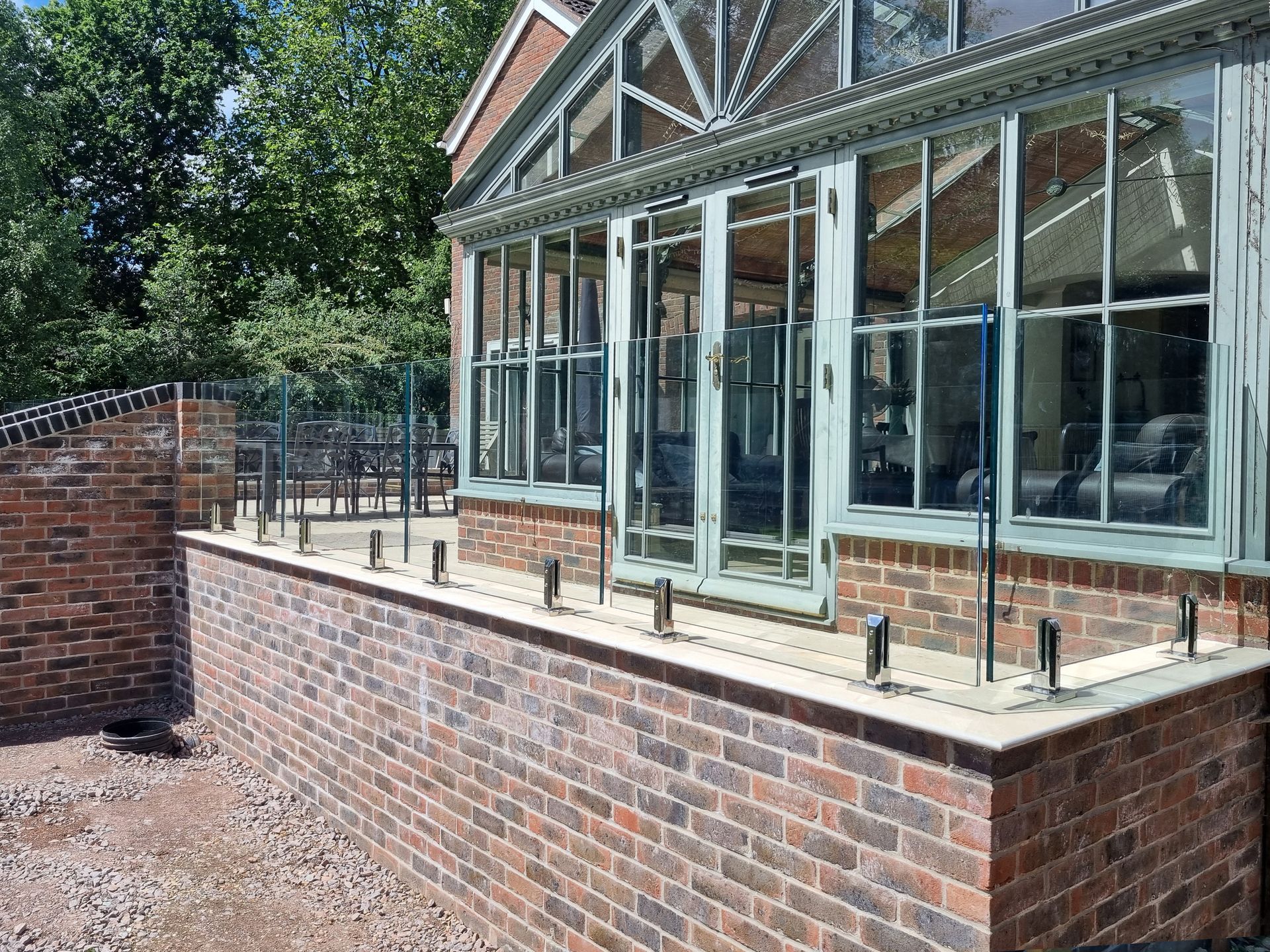By colin
•
November 10, 2025
If you are planning a balcony, raised deck, terrace or new staircase, getting the balustrade right is about more than looks. The Building Regulations set clear rules for when you need a barrier, how high it must be, how much load it should withstand, and what is safe on stairs. This plain English guide covers the essentials so you can plan with confidence across Cambridgeshire, Suffolk, Essex, Norfolk, Hertfordshire and Bedfordshire. At Aristo Balustrades, we design, manufacture and install bespoke systems to current standards, then handle the specification and compliance details for you. You get a safe, beautiful result without the stress. When a balustrade is required You must provide guarding wherever there is a risk of falling one metre or more. Common examples include: Balconies, roof terraces and mezzanines Raised patios and decks External stairs, ramps and landings Internal stair voids and gallery edges For single steps or changes in level under one metre, guarding is still wise if there is a risk of injury, especially for children or where surfaces are slippery. In commercial and public areas, the duty of care is higher, so guarding is expected at lower perceived risks. Minimum balustrade heights Heights vary slightly by location and building use. Typical guidance used in the UK is: Internal domestic stairs, landings and galleries: top of the handrail or guarding at least 900 mm above pitch line or floor External domestic balconies and raised areas: guarding at least 1100 mm above finished floor level Commercial or public spaces: often 1100 mm minimum on edges and landings; stair handrails between 900 mm and 1000 mm above pitch line We will confirm the correct requirement for your project type and location, then set out the design to meet it. The 100mm gap rule explained The 100mm rule, sometimes called the 100mm sphere rule, means that a 100 mm ball must not be able to pass through any opening in the guarding up to a height of 1100 mm. The aim is to prevent a child from slipping through or getting trapped. It applies to gaps between posts, glass panels, rails and wires. What this means for design: Glass panels are typically continuous or closely spaced so no gap exceeds 99 mm Vertical balusters are set so clear openings are under 100 mm Wire infill designs require careful tension and spacing to prevent deflection that opens gaps At stair pitches, triangular gaps near treads must also comply Aristo details all fixings, spacings and deflection limits during design to prove the 100 mm rule is met in use, not just on paper. Is it illegal to have no bannister on stairs In a dwelling, if there are two or more risers and there is a drop on one or both sides, you must have guarding to prevent falls. A continuous handrail is also required on at least one side of the stair. On wider or commercial stairs, handrails may be required on both sides. So yes, for most stairs it is not compliant to have no bannister. Handrails should be easy to grip and run the full length of the flight, with safe returns at the ends. Do you need a top rail for glass balustrade It depends on the system and setting. Many glass balustrades use a continuous top rail that contributes to strength, stiffness and handhold. In some frameless systems with laminated glass and tested fixings, the glass alone can act as the barrier and the handrail can be separate or omitted on edges that are not stairs, provided the design has been tested to the relevant load and edge protection requirement. On stairs and ramps, a handrail is almost always required. We will advise whether a minimalist capping or full handrail is needed based on your layout, usage and preferred look. Load and strength considerations Regulations require balustrades to resist horizontal line loads and point loads without excessive deflection or failure. Typical categories include: Domestic stairs and landings: 0.36 kN per metre line load Domestic balconies and terraces: 0.74 kN per metre line load Offices, shops and public areas: higher loads may apply, such as 1.5 kN per metre Glass thickness, laminate configuration, fixing type, post sizing and base channels are all chosen to meet the required load category. We work with certified systems, structural calculations and test data to demonstrate compliance for your specific installation. Do you need planning permission for a balustrade It depends on where it is and what else you are building. Replacing like for like guarding on an existing balcony or internal stair typically falls under maintenance and may not need planning permission New balconies, roof terraces or external platforms often need planning permission because they change the external appearance and can affect privacy; privacy screens may be requested by planners Raised decks over 300 mm high require planning permission unless covered by permitted development rules for your property; many raised decks trigger a planning application In conservation areas or listed buildings, consent is more complex and you should always check before ordering We regularly help clients in market towns and villages across the region to prepare drawings and product specifications for planning where required. Handrails, children and climbability Handrails should be continuous, easy to grasp and free of sharp edges. For domestic stairs, a height around 900 mm measured to the pitch line is common. Where children use the space, avoid horizontal rails that encourage climbing. Glass is a good option because it provides clear views and a smooth surface without footholds. If you prefer a rail or wire aesthetic, we will design the layout to discourage climbing and still meet the 100 mm rule. Materials that satisfy the rules and look great Glass balustrades: Toughened or toughened laminated glass, set in a base channel or on spigots, delivers clear views and a modern feel. We specify thickness and interlayers to match your load category Stainless steel systems: Posts, rails and wire rope options in marine grade 316 stainless provide durability with a contemporary look. Duplex 2205 spigots are available where higher strength and corrosion resistance are needed, such as coastal or exposed sites Aluminium systems: Powder coated aluminium posts and rails offer a lightweight, cost effective solution with a broad colour range. Ideal for low maintenance projects Typical planning and next steps in our region Across Cambridgeshire, Suffolk, Essex, Norfolk, Hertfordshire and Bedfordshire, local authorities follow national guidance but may add privacy or detailing conditions for balconies and roof terraces. We can provide drawings, product data and sample finishes to support your application. For raised decks and garden terraces, we assess height, overlooking and access to advise whether planning is needed and how to proceed. If you are exploring options for a terrace in Chelmsford, a stair upgrade near Cambridge or a coastal renovation in North Norfolk, we can recommend compliant solutions that suit the exposure, maintenance needs and style of your property. For example, a frameless design for uninterrupted views or a post and rail layout for a classic profile. Who checks compliance For most domestic projects, your installer is responsible for meeting the Building Regulations. Where building control is involved, we provide specifications and calculations as needed. On commercial projects, we coordinate with your designer or principal contractor to ensure the correct load category, fixings and handrail provisions are in place. How Aristo makes compliance simple Site visit to confirm levels, edges and fixing substrates Design and specification that meet height, gap and load requirements Material selection for performance and environment Manufacture and installation by experienced fitters Documentation for building control or planning as required Standard residential installations are often completed in 1 to 2 days, subject to complexity and access. Ready to talk through your project If you have questions about the 100 mm gap rule, handrails on stairs or whether planning permission applies, Colin is happy to help. Call 07471 133717 or email colin@ aristo-balustrades.co.uk for practical, straight answers and a design that fits your space. Looking for ideas or a local starting point near you You can browse options such as essex glass balustrade or glass balustrade cambridge to see styles we install. If you are planning a terrace refresh, ask about a glass balustrade upgrade in norfolk and how it can meet height, gap and load rules while keeping your view. Summary Provide guarding where there is a fall of one metre or more; use 900 mm to 1100 mm heights depending on location The 100 mm sphere rule applies to all openings up to 1100 mm; design to prevent deflection that could create larger gaps Stairs need guarding and a continuous handrail on at least one side; more may be required for wider or commercial stairs Choose materials and fixings to meet the correct load category for your space Planning permission is often required for new balconies, roof terraces and raised decks; we will advise and support your application Aristo Balustrades designs and installs to current standards throughout Cambridgeshire, Suffolk, Essex, Norfolk, Hertfordshire and Bedfordshire, so you can enjoy a safe, elegant result. Speak to Colin to get started.

